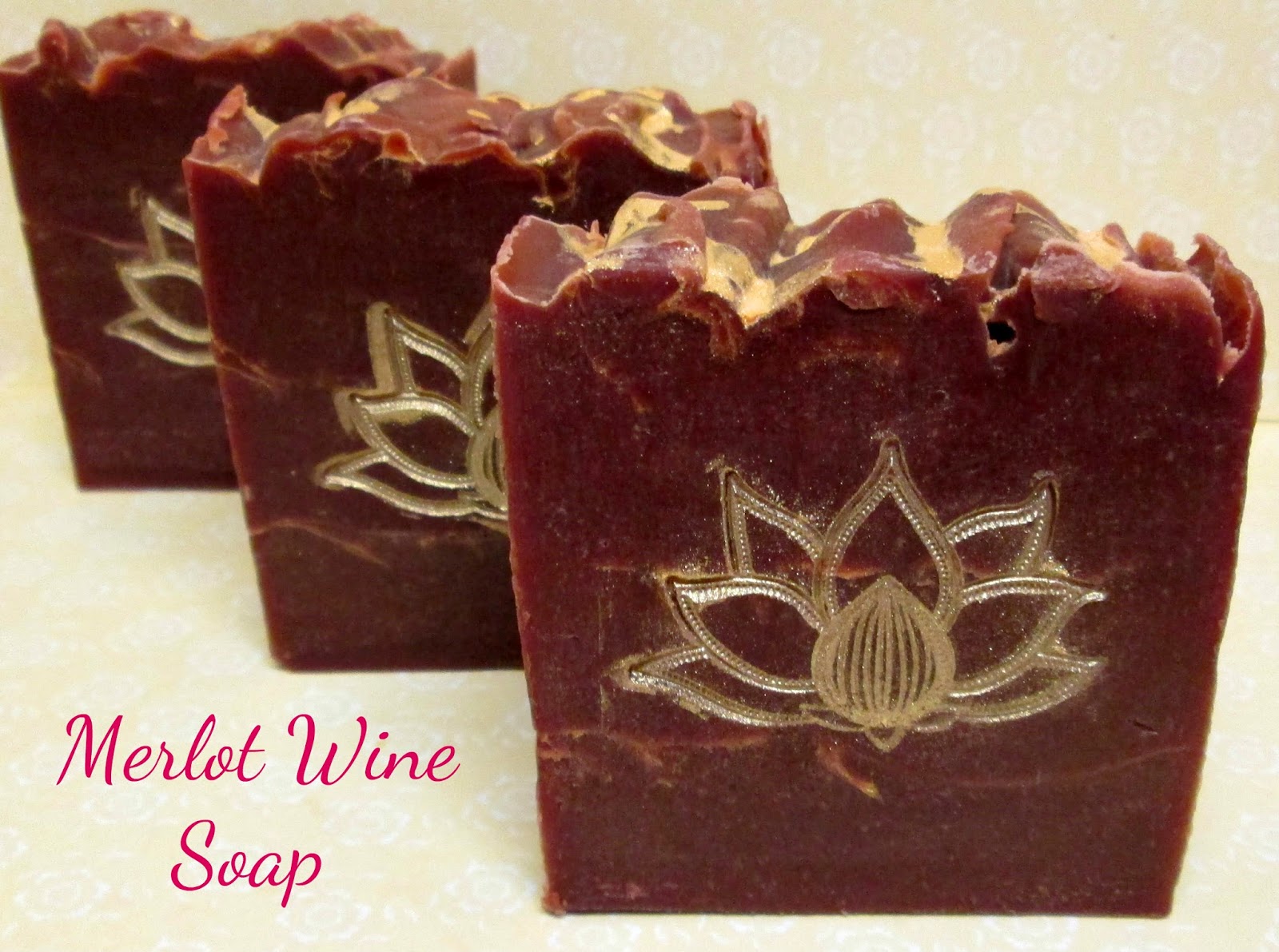Making wine soap is a lot like making beer soap, and wine and beer bring similar qualities to the bars. The natural sugars in each help to boost the lather, making it fluffy, creamy, and luxurious. Both are wonderful additives, and they add interest to a batch.
Using alcohol in soap can be tricky, though. Alcohol can cause the lye solution to bubble up like a volcano eruption. And it can make the soap seize, which will absolutely ruin a day in the soaping kitchen. (If you want to see an epic seize, check out this video to see the time I got soap-on-a-stick.)
The good news is that you can take steps to avoid volcanoes and soap seizes. The best method I know of is to bring your wine or beer to a boil on the stove top and let it simmer for about 10 minutes or so to cook out the alcohol. You'll lose some of the liquid due to evaporation, but you can either boil more than you need, or simply make up the difference with distilled water.
 |
| Boiling, measuring, and freezing the wine |
Another thing about working with wine or beer or even milks is that the natural sugars can cause the soap to heat up quickly. Also, if your lye solution gets too hot, the sugars can scorch. To combat this problem, I froze my wine after it had been simmered and cooled. After adding my lye to the frozen wine, I stirred the lye solution in an ice bath to keep the temperature low. Overall, I soaped cooler, too. I normally soap between 100-110 degrees F, but for this batch, I combined the lye solution and the oils when the lye solution was at about 84 degrees F and the oils were at 91 degrees F. And because batches that contain wine, beer, or milk can heat up more than batches that don't, I didn't insulate my mold.
For the fragrance, I chose Bramble Berry's Bordeaux Blend, which I had bought a while back. It is perfect for a red wine-type soap. It's fruity and spicy; sweet but sophisticated.
The wine/lye solution had a bit of a brownish-green tinge, and it smelled a little funky. (Don't worry, the funky smell should disappear during the cure.) To make sure that my soap stayed a deep red Merlot color, I added a generous amount of Merlot Sparkle mica into my oils before adding the lye. (I mixed the mica with a bit of glycerin first to avoid clumping and streaking.)
Once I added the fragrance oil and the mica to my cooled oils, I mixed in the lye solution, pouring it through a strainer just in case there was any undissolved lye. Then I stickblended the soap to a medium-thick trace.
Bramble Berry mentions that the Bordeaux Blend FO may move quickly, I would guess probably because of the cinnamon and clove notes. The soap did get thick on me, but it wasn't unmanageable at all. Besides, I was doing layers so a thicker trace worked out perfectly.
 |
| Fragrance oil and micas |
To make the mica oil, I mixed some Gold Sparkle mica with some olive oil. To make the swirls, I drizzled the mica oil onto the soap with a pipette. The olive oil saponifies along with the rest of the soap, leaving behind the shimmery mica.
I poured about one-third of the batter into my mold, drizzled some mica oil on top and then swirled it with a spoon, poured another third of the batter and drizzled and swirled more mica oil, and finally poured the rest of the soap batter and topped it off with more mica swirls.
I was going for crackled, wispy gold lines running horizontally through the bars. Overall, I was happy with the results, although the lines ended up being a bit more subtle than I was hoping for. So, I decided to jazz things up a bit more by stamping the soaps. To stamp the soap, I pressed my stamp into some dry mica, tapped off the excess, and then gently pressed the stamp onto the surface of the soap. It is best to stamp freshly-cut soap so that the mica will stick.
Here is a video showing how I made this batch:
I am very happy with how these turned out! The stamp adds so much drama, and the gold looks so great against the deep red. You can see the wispy mica lines faintly, which I think is nice even if I was hoping that they'd be a little more distinct. A jagged mica pencil line might have been cool, too. Or it may have been neat to drizzle the mica oil in between the layers and leave them be without swirling. The effect may not have been as widespread throughout the bars, but it may have created some dramatic mica specks.
I've already tested an end piece sliver, and these bars lather great! The bubbles are fluffy and creamy, and the soap smells spectacular. I've also got some Pinot Grigio FO in my fragrance bin, so there will probably be more wine soap in my future someday.
Have you ever made or used wine soap? Did you enjoy it?



